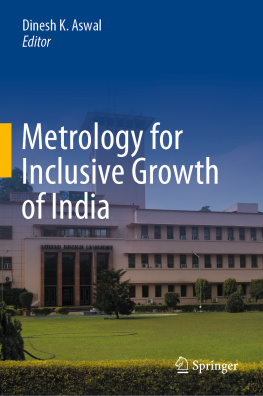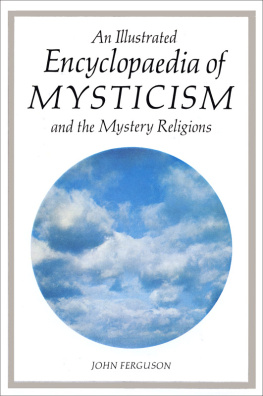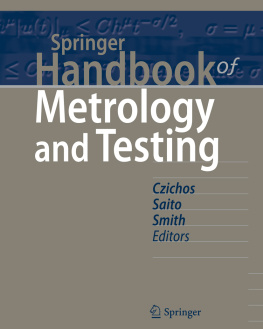Units of measurement have been essential in every single civilisation throughout history. Since the dawn of mankind, man has, through necessity, devised various rudimentary measures to assist him in everyday life. We assume that homo sapiens during the Palaeolithic period ( c . 2,500,000 c . 9000 BCE) was capable of experiencing seasons, near and far, heavy and light, big and small, etc. The early weights were simple stones, an empty shell was used for measuring capacity, and parts of the body, like lengths and widths of fingers, cubits, and body spans, were adequate for most needs in length measurement. Time was probably measured by periods of the sun, moon, and other heavenly bodies.
As agriculture and handicrafts developed, and as various gifts of nature were unevenly distributed geographically, it gradually became necessary to open trade. Even if exchanges were made between different countries, provinces, towns, and even between villages, this trading was still infrequent and of comparatively insignificant importance. Hence, each small community often also originated its own traditional measures. We can also assume that these early units of measurement were more or less specified and regulated depending on how important a commodity, a certain distance or a specific area was to the current society. For example, we know that salt was of great importance in Mesoamerican societies, just as gold was in the early West African cultures and the thickness of the ice on a frozen lake in Inuit communities in northern Canada. Unfortunately, artifacts that can provide unequivocal information, since they were made of stone or metal, are relatively rare. Instead, scholars are compelled to refer to indirect sources, such as architecture, standardized pots, coins and various weighed items, for the conversion of a historical unit of measure into our metric system.
The need for standardized units of measurement increased significantly as societies became involved in wide-scale commerce. It soon also became necessary to enact laws to regulate transactions and the accuracy of standards, as the need to combat cheating increased. In the wake of this, the establishment of official weights and measures became an essential element to ensure fair trade and, not least, to ensure that the right amount of tax was paid to the ruling power.
But let me first give a very brief summary of the origins of different types of unit of measurement, how they evolved into systems of measurement, and finally, how they spread across continents.
Main sources : A chronological history of the modern metric system (to 2008) by metricationmatters.com, [JOHN], [KENN], [KISC], [NEB83], and [ZUPK6].
Units of Weight
The amount of a certain commodity was usually measured by its weight. Here, three basic concepts may be discerned: firstly, two objects could be compared by merely lifting them, or even simply by estimating their weight by sight; secondly, concepts like the maximum weight conveniently carried by a human, a donkey, or a camel could be used; and, thirdly, weight could be determined through the use of some kind of weighing apparatus. As for the use of some kind of weighing equipment, this could be done by balancing one commodity against another, by using natural objects, e.g., various seeds, as weights, and by balancing objects against coins or artificially made weights. When one looks at the weights used in different societies in the past, it is obvious that most units, had they been shaped like a smooth, rounded stone, would have fit comfortably in the palm of a full-grown man. This means that most societies had use for a weight of about 450600 g. Hence, the oldest unit of weight used by humans were probably weight units of this size. A mina weight made of stone from c . 2350 BCE, found in Lagasch, Mesopotamia, that weighed about 477 g, supports this theory. When civilizations began trading with precious metals and other precious goods, different grains, e.g., from wheat and barley, came into use for this purpose.
Units of Length
A royal master cubit artefact from c . 2600 BCE made of black marble and evidence for the use of a royal cubit when constructing the Step Pyramid of Djoser c . 2700 BCE are among the earliest attested standard measures of length. A cubits length, about 523 mm, was derived from the length of the arm of the ruling Pharaoh, from the elbow to the outstretched tip of the middle finger. It was divided into 28 parts, 7 palms of 4 fingers each. A copper-alloy bar of about 518.6 mm found during excavations at Nippur in 1916 dates from c . 2650 BCE and is probably a Sumerian cubit artefact. This Nippur cubit was divided into 24 parts, 6 palms of 4 fingers each. During excavations at Tamil Nadu, an artefact dated from c . 2600 BCE and measuring about 838 mm was found. It was divided into 24 parts of about 3.5 mm each. These three units are the first known standards for measuring length.
Units of Land Area
When it comes to the desire or ability to calculate the size of a parcel of land, this was particularly characteristic for sedentary civilizations, where land area units reflected the farmers experience of the land. There were units representing the amount of land that could be cultivated in a day by hand, without mules or oxen, e.g. the French ouvre and the Anglo-Saxon daies work . A more common type of land area units represented the amount of land tillable by one man behind an ox in one day. The Roman iugerum , the English acre and the German Morgen were all derived from this type of measures. There were also land area units based on the amount of land a farmer owning a yoke of oxen could keep in cultivation. Examples are the English yard-land and the oxgang . Depending on the social conditions, agricultural techniques and the prevailing climate, these measures varied over time.
Finally, there were the measures of land, that only took into account the lands yield, e.g. the Anglo-Saxon carcute , the German Hufe and the Baltic uncus . These type of units were also used for tax assessment, e.g. the Anglo-Saxon geld acre and ware acre .
Units of Capacity
Capacity was often significantly more difficult to define than weight, length or even area, as there were few universally available measures of volume. For this reason, it was more common in early cultures to weigh goods instead of calculating their capacity. In cases in which units of capacity came into use, there were at least three methods for defining dimensions. Firstly, natural units based on the human body, e.g., a handful; secondly, natural containers, e.g., gourds, horns and bamboos; and thirdly, locally made containers, e.g., made specifically for that purpose out of wood, clay or plant materials, and even holes in the ground. To compare the capacity of containers, they were filled with plant seeds that were then counted to measure the volume. Twined baskets, found during excavations in Oasis America, date back to c . 7000 BCE. These represents the oldest known units of capacity.
Ancient Systems of Measurement
As sedentary civilizations evolved and the science developed, measurement became more complex and sophisticated. As time progressed, the measures were improved and made more precise, but still referred to by their ancient names. Soon, a need arose to arrange the units into systems of measurement. Among the more commercially-oriented communities, it soon became necessary to standardize to multiple devices according to a mathematical scale, sometimes called metrological systems, which were more or less precisely defined in relation to a standard measurement unit, usually stated through edicts of local or national rulers. These systems of measurement were based on the principle that smaller units make up larger units, which, in turn, make up yet larger units and so on.













